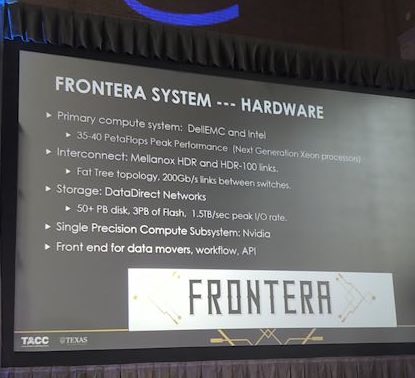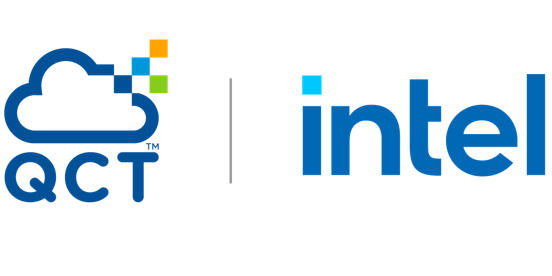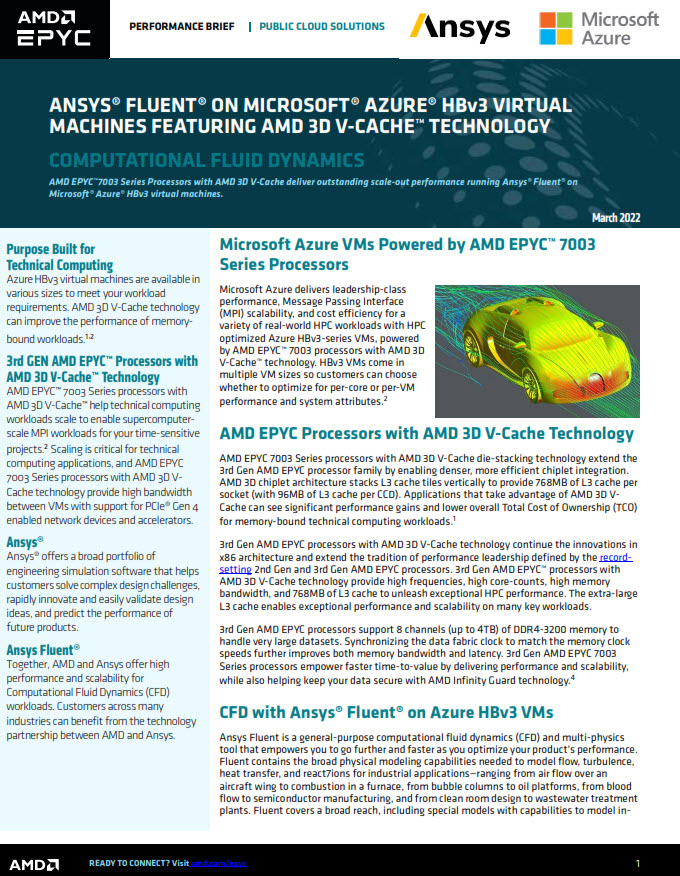In this talk from the Intel User Forum at SC18, Dan Stanzione from TACC presents: Computing for the Endless Frontier.
Coming to TACC in 2019, the Frontera supercomputer will be powered by Intel Xeon Scalable processors. It will be the first major HPC system to deploy the Intel Optane DC persistent memory technology for a range of HPC and AI uses. Anticipated early projects on Frontera include analyses of particle collisions from the Large Hadron Collider, global climate modeling, improved hurricane forecasting, and multi-messenger astronomy.”
The Frontera (Spanish for “frontier”) supercomputer will begin operations in 2019. It will allow the nation’s academic researchers to make important discoveries in all fields of science, from astrophysics to zoology, and further establishes The University of Texas at Austin’s leadership in advanced computing.
For over three decades, NSF has been a leader in providing the computing resources our nation’s researchers need to accelerate innovation,” said NSF Director France Córdova. “Keeping the U.S. at the forefront of advanced computing capabilities and providing researchers across the country access to those resources are key elements in maintaining our status as a global leader in research and education. This award is an investment in the entire U.S. research ecosystem that will enable leap-ahead discoveries.”
 Frontera is the latest in a string of successful awards and deployments by TACC with support from NSF. Since 2006, TACC has built and operated three supercomputers that debuted in the Top 10 most powerful systems in the world: Ranger (2008), Stampede1 (2012) and Stampede2 (2017). Three other systems debuted in the Top 25.
Frontera is the latest in a string of successful awards and deployments by TACC with support from NSF. Since 2006, TACC has built and operated three supercomputers that debuted in the Top 10 most powerful systems in the world: Ranger (2008), Stampede1 (2012) and Stampede2 (2017). Three other systems debuted in the Top 25.
If completed today, Frontera would be the fifth most powerful system in the world, the third fastest in the U.S. and the largest at any university. For comparison, Frontera will be about twice as powerful as Stampede2 (currently the fastest university supercomputer) and 70 times as fast as Ranger, which operated until 2013. To match what Frontera will compute in just one second, a person would have to perform one calculation every second for about a billion years.
Today’s NSF award solidifies the University of Texas’ reputation as the nation’s leader in academic supercomputing,” said Gregory L. Fenves, president of UT Austin. “UT is proud to serve the research community with the world-class capabilities of TACC, and we are excited to contribute to the many discoveries Frontera will enable.”
Anticipated early projects on Frontera include analyses of particle collisions from the Large Hadron Collider, global climate modeling, improved hurricane forecasting and multi-messenger astronomy.
The primary computing system will be provided by Dell EMC and powered by Intel processors. Data Direct Networks will contribute the primary storage system, and Mellanox will provide the high-performance interconnect for the machine.
The new Frontera systems represents the next phase in the long-term relationship between TACC and Dell EMC, focused on applying the latest technical innovation to truly enable human potential,” said Thierry Pellegrino, vice president of Dell EMC High Performance Computing. “The substantial power and scale of this new system will help researchers from Austin and across the U.S. harness the power of technology to spawn new discoveries and advances in science and technology for years to come.”
Faculty at the Institute for Computational Engineering and Sciences (ICES) at UT Austin will lead the world-class science applications and technology team, with partners from the California Institute of Technology, Cornell University, Princeton University, Stanford University, the University of Chicago, the University of Utah and the University of California, Davis.
Accelerating scientific discovery lies at the foundation of the TACC’s mission, and enabling technologies to advance these discoveries and innovations is a key focus for Intel,” said Patricia Damkroger, Vice President in Intel’s Data Center Group and General Manager, Extreme Computing Group. “We are proud that the close partnership we have built with TACC will continue with TACC’s selection of next-generation Intel Xeon Scalable processors as the compute engine for their flagship Frontera system.”
Experienced technologists and operations partners from the sites above as well as The Ohio State University, the Georgia Institute of Technology and Texas A&M University will ensure the system runs effectively in all areas, including security, user engagement and workforce development.
With its massive computing power, memory, bandwidth, and storage, Frontera will usher in a new era of computational science and engineering in which data and models are integrated seamlessly to yield new understanding that could not have been achieved with either alone,” said Omar Ghattas, director of the Center for Computational Geosciences in ICES and co-principal investigator on the award.
Frontera’s name alludes to “Science the Endless Frontier,” the title of a 1945 report to President Harry Truman by Vannevar Bush that led to the creation of the National Science Foundation.
NSF was born out of World War II and the idea that science, and scientists, had enabled our nation to win the war, and continued innovation would be required to ‘win the peace’,” said Stanzione. “Many of the frontiers of research today can be advanced only by computing, and Frontera will be an important tool to solve grand challenges that will improve our nation’s health, well-being, competitiveness and security.”
Frontera will enter production in the summer of 2019 and will operate for five years. In addition to serving as a resource for the nation’s scientists and engineers, the award will support efforts to test and demonstrate the feasibility of an even larger future leadership-class system, 10 times as fast as Frontera, to potentially be deployed as Phase 2 of the project.




